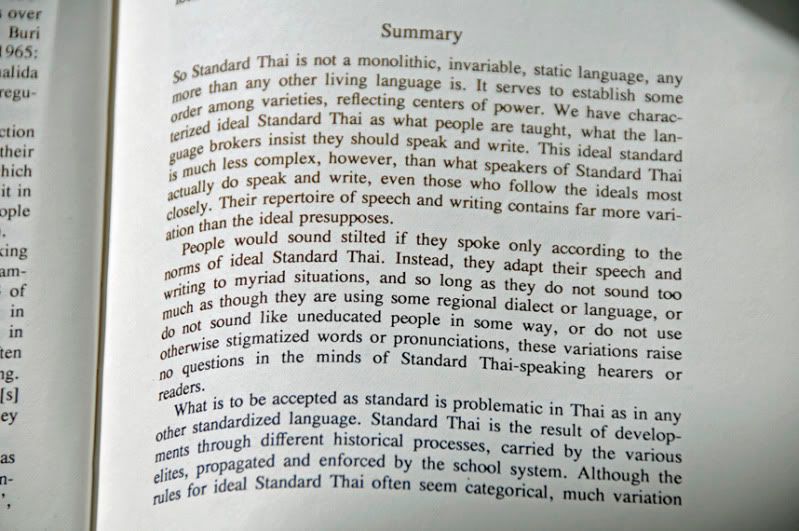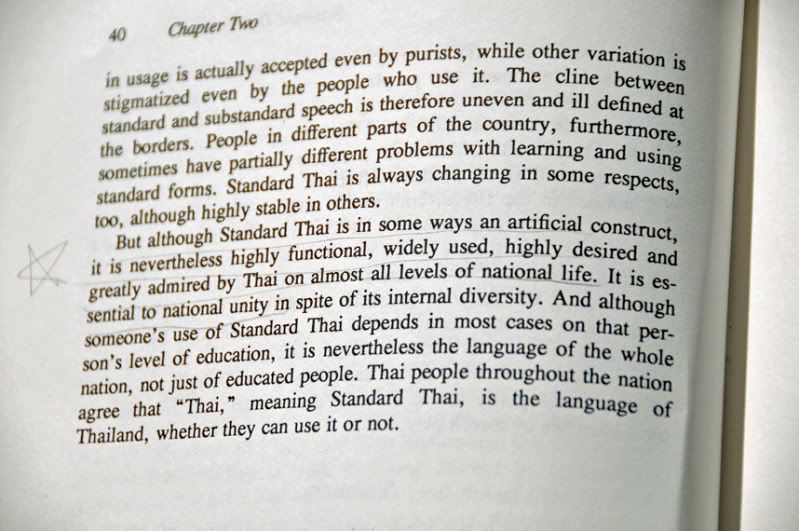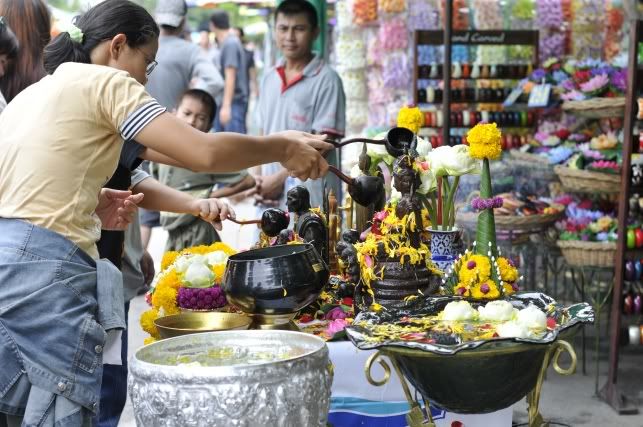Language Ecology in Thailand according to William : Part II

Standard Thai around the Nation
But although no clear-cut, objective, strictly definable Standard Thai can be identified, any more than can any such rigidly definable Standard American English, Standard Thai is nevertheless very real in Thai culture, education, self-understanding, and values. It is a cultural concept with variable manifestations, some loose and relatively unformulated and others about which strong opinions exist.........
…….The Thai school system has spread Standard Thai throughout the country in what is its officials consider to be a pure form, maintaining remarkable uniformity as spoken by sufficiently educated people with different mother tongues. Reinforcing and supplementing education is the ubiquitous Standard Thai of the radio, widespread television, and print media in all but the most remote rural areas.
But on the other hand, just as Standard Thai is not an unvarying entity as used by educated speakers in Bangkok, neither is it completely uniform as it occurs across the country. Slightly divergent geographic dialects are to be found, as in any other major language. Most of these have been introduced into Standard Thai from regionalism, but in one respect at least, some outlying ones are closer to ideal Standard Thai than is the actual Standard Thai of Bangkok.
Ideally, for exp, spoken Standard Thai requite people to pronounce written “R” and “L” as “r” and “l” respectively. We are speaking now of single consonants, not of these sounds in the clusters discussed above. “ROD” (to water, sprinkle) is supposed to be pronounced differently from “LOD” (to lower, reduce)…..Children are drilled in school on making this distinction, and an occasional article deplores the fact that many people do not in fact regularly do so.
Amount educated Bangkok speakers of Standard Thai some will sometime make this distinction in pronunciation when they are being extra careful. Perhaps a few regularly make it. But most speakers of Standard Thai throughout the country pronounce words with these spellings sometime one way, sometime the other way, most commonly giving an “L” pronunciation to both. ………
…..So “L” and “R” are a problem for most speakers of Standard Thai, who believe they should pronounce a distinction, but whose internal grammatical rules, as distinct from what they are told in school, do not provide one. They are area of the country, however, where a clear distinction does exist with most speakers. In the Northern Khmer-speaking areas of Surin, Buri Ram and Si Sa Set provinces of northeast Thailand, for exp speakers of Standard Thai whose mother tongue is Northern Khmer distinguish between “R” and “L” in their Standard Thai because they have such a distinction in their variety of Khmer.
In much of the southern peninsula, from Chumphon Province south, with the exception of the border provinces of Songkhla, Yala and Satun, furthermore, the local Thai languages and dialects have a distinct “R”…………..


Click on the picture for : Language Ecology in Thailand according to William : Part I
Copied from “Linguistic Diversity and National Unity ; Language Ecology in Thailand” by William A. Smalley, 1994 by the University of Chicago.





0 Comments
Recommended Comments
Please sign in to comment
You will be able to leave a comment after signing in
Sign In Now